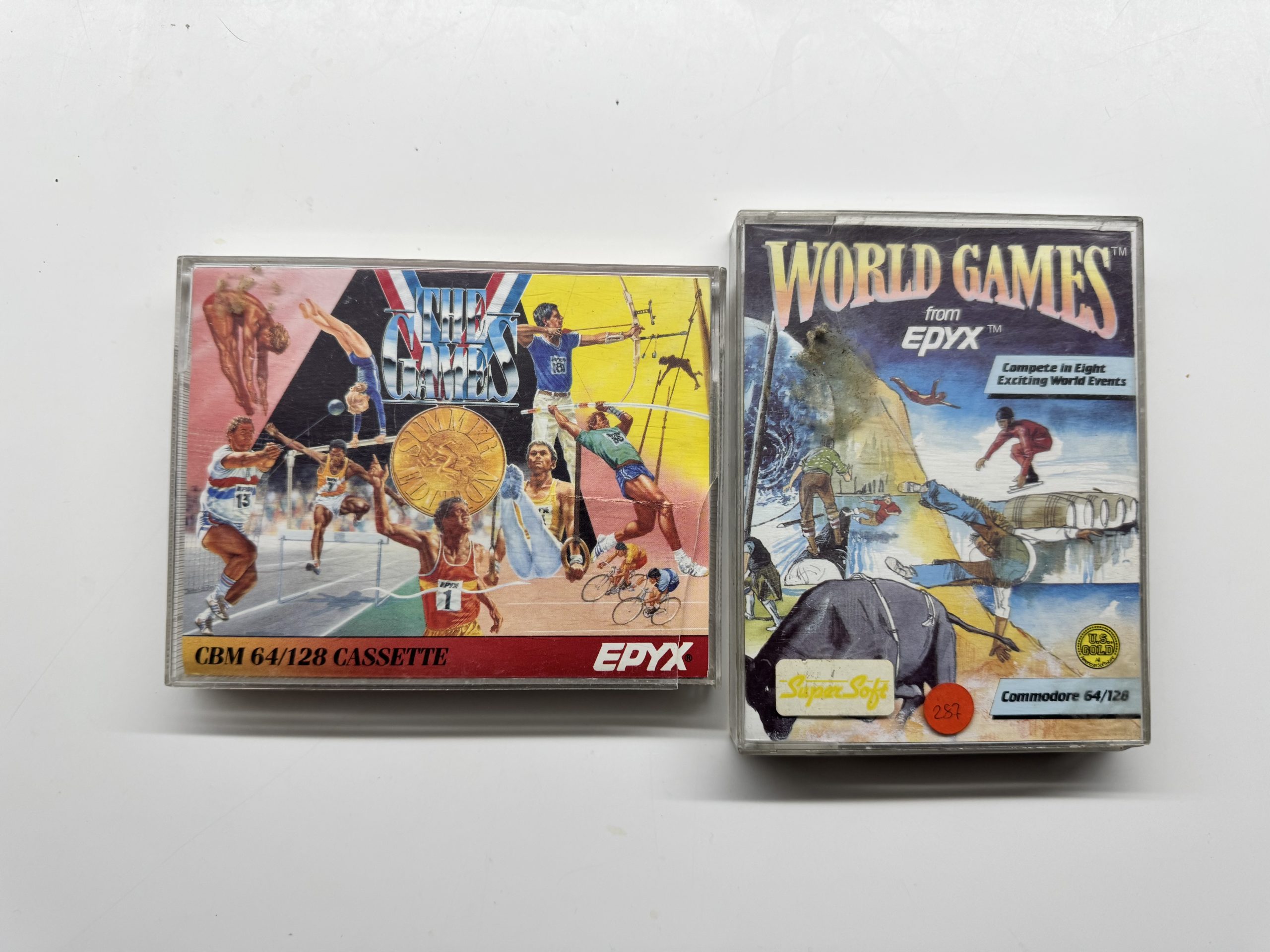While cassette games usually still work even today, disk games have a considerable error margin. Original games vary greatly in price, meaning that the effort put into testing needs to have be reasonable. Here is what you can expect when I sell software.
Disk games
Disk games tend to be increasingly valuable but unfortunately also increasingly error prone. I usually test that the games can load until startup. I do not perform general read tests on the disks, so the test procedure does not provide a complete disk validation.
For collectable items, completeness is key, and for that reason, I usually try to determine what a complete copy of the game looks like. I use either retrocollector.org or eBay for that purpose. This applies to both disk and tape games. I provide information about completeness only when I am highly certain about it.
Tape games
Tape games can be valuable, but most of them are very common and certainly not in high demand. Tape games are less error prone than disk games. If stored correctly, most tape games still work even today.
Original tapes are usually recorded on both sides. In some cases, the same game is on both sides. In other cases, there are multiple games on the same tape or the game consists of multiple parts, requiring both sides of the tape to store all the data.
In general, I only test one side of a tape. If the tape works on one side, chances are that both sides work. After all, it is a mere 3.81 mm wide, with side A data residing on the first 1.9 mm and side B data residing on the other 1.9 mm, albeit in opposite travel direction. If it is possible to load from one side of the tape, it is a reasonable assumption that the data stored on the other 1.9 mm can be loaded too, not least when considering that tapes are pretty sturdy as data media.

However, I have had games that I managed to load on one side but not the other. If a tape contains copies of the same game on both sides, and it for some reason fails to load on side A in the first attempt, I usually move on to side B instead of rewinding side A. In most cases, this doesn’t mean that side A isn’t working. It is usually just a matter of the equipment failing to read in the first attempt due to some hick-up. Additionally, I have a suspicion that some tapes are recorded with different azimuth settings on each side.
I always test tape games with the factory default azimuth setting. If a game fails to load, I may try another datasette with a different azimuth setting. For longer tapes, I usually go with the Datamark datasette below, as it is more powerful. As mentioned elsewhere, Commodore 1530 was ment for 30 minute tapes at a maximum, and many of them don’t do well with long tapes.

Cartridges
Cartridges are the simplest media to test, as you basically just need to insert them in the machine. When the cartridge has buttons, I also press them to test that they still work. I don’t perform any additional tests.
Tapes and disks with unknown content
I now and then sell tapes and disks with unknown content. These are floppies and tapes that came with a collection of retro equipment. I don’t test these media as the price per unit is way less than €1. This means that I don’t guarantee that the media contains anything or that they work.
Albeit the media might contain software protected by copyright back in the days, most of the software is publically available anyway and is effectively abandonware. I never discard old media as they may contain otherwise forgotten intros, homemade games or demos that weren’t released to a broader audience. While I don’t support counterfeit software in any way, it is part of being a retro fand that you do your best to keep the heritage alive.


Leave a Reply